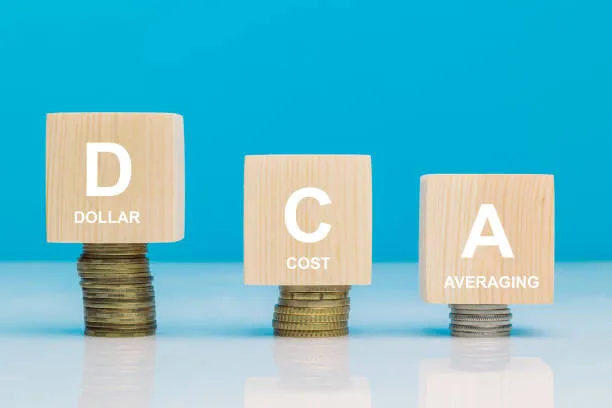Everyone knows that the cryptocurrency market can be extremely unpredictable, which is why the trading strategy that you select can significantly impact your investments.
Safeguarding your bottom line in a volatile crypto market requires effective risk management.
Diversification is one of the core concepts of investing, one that significantly lowers a portfolio's risk.

By diversifying your crypto investment and routinely rebalancing your assets, you are more likely to protect your assets and earn profits. Luckily, there are various ways to diversify your crypto assets, depending on your level of risk tolerance.

Diversification is a strategy that involves spreading your investments across different types of assets. Instead of buying only crypto for example, you can as well allocate certain percentages to certain assets within your overall accumulated crypto assets . By taking this approach, you limit risk and reduce volatility, thereby making your portfolio more stable.
In simple terms, diversifying your assets ensures that you don't lose everything at once if one type of investment goes down in value.
Diversifying your crypto portfolio involves spreading your investment across multiple coins, tokens, or projects. Investing in a single cryptocurrency can be risky, too, even if you decide to invest in the best cryptocurrencies such as Bitcoin and Ethereum. Both have experienced significant price swings over the past year and will likely continue to experience similar movements in the future.

Cryptocurrencies like Bitcoin can experience daily or even hourly price volatility.
As with any kind of investment, volatility may cause uncertainty, fear of missing out, or fear of participating at all. When prices are fluctuating, how do you know when to buy and sell?
In an ideal world, it’s simple: buy low, sell high. In reality, this is easier said than done, even for experts.
An example of subtle art to diversification of crypto assessment that readily comes to mind is the DCA, dollar cost averaging!

Many investors use a strategy called dollar-cost averaging (or “DCA”) to reduce the impact of market volatility by investing a smaller amount into an asset like crypto, stocks, or gold on a regular schedule.
DCA might be the right choice when someone believes their investments will appreciate or increase in value in the long term and experience price volatility on the way there.
DCA is a long-term strategy, where an investor regularly buys smaller amounts of an asset over a period of time, no matter the price for example, investing $100 in Bitcoin every month for a year, instead of $1,200 at once.

Although DCA is a popular way to buy Bitcoin, it isn’t unique to the cryptosphere alone .Traditional investors have been using this strategy for decades to weather stock market volatility. You may even use DCA already if you invest via your employer’s retirement plan every payday.
DCA can be an effective way to own crypto without the cumbersome, difficult work of timing the market or the risk of unwittingly using all of your funds to invest “a lump sum” at a go.
The key about this diversification tactic is choosing an amount that’s affordable and investing regularly, no matter the price of an asset.
This has the potential to “average” out the cost of purchases over time and reduce the overall impact of a sudden drop in prices on any given purchase. Par adventure if prices do fall, DCA investors can continue to buy, as scheduled, with the potential to earn returns as prices recover.

By putting all of your (crypto) eggs in one basket, you risk losing the value of your entire crypto assets due to a one-off event such as a market crash, crypto winter, or even something as mundane as an unforeseen crypto malware attack.
If you spread your investments across different coins and tokens, you will be less exposed to the consequences of a negative news event or market downturn, enabling you to weather the storm and continue to grow your crypto holdings.
Your risk tolerance should serve as your guide when it comes to diversifying your crypto portfolio. What is best for you will depend on your risk profile, but there should still be a balance.
Dividing your investments into high, medium, and low-risk categories and assigning the proper weights is surely a way to go.
Of course, a crypto investment with a sizable percentage of high-risk investments is unbalanced. It may have the potential to give you greater gains, but it also may result in significant losses.
Cryptocurrencies have many different real-world applications aside from serving as a store of value or a way to buy and sell goods and services securely.
There are currently over 12,000 cryptocurrencies and the number of tokens continues to grow at an extraordinary rate.
The disruptive power of FinTech, with its emphasis on automation, as well as the promise of blockchain technology, which is fueling the growth of decentralized finance (DeFi), have led to a wide range of use cases outside of traditional financial transactions.
Although the current crypto forecast is cloudy, the future of cryptocurrency is a bright and sunny one.
Diving into the cryptosphere without the in-depth understanding of diversification is a risk that crypto investors cannot afford to take. It means that your investments are weighted toward one or two tokens, if the price crashes, then your assets will crash with it.
Rather, choosing to diversify your crypto assets means that you are taking a proactive approach to risk mitigation.
Selecting different types of tokens e.g., payments, security, utility, governance, and gaming across a range of different industries (me.g., banking and financial services, government, healthcare and life sciences, insurance, media and entertainment, retail and consumer goods throughout the world means that you are limiting the potential damage to your crypto holdings should things head south in the market.

Not to forget if you’re new to the crypto space, having a diversified portfolio also allows you to gain some exposure to this exciting, emerging market without bearing the full weight of its volatility.
Albeit always remember the golden rules when it comes to investing ;do your own research and never invest more than you can afford to lose.